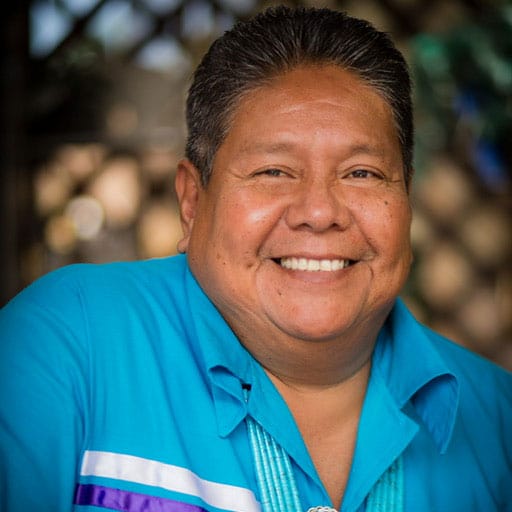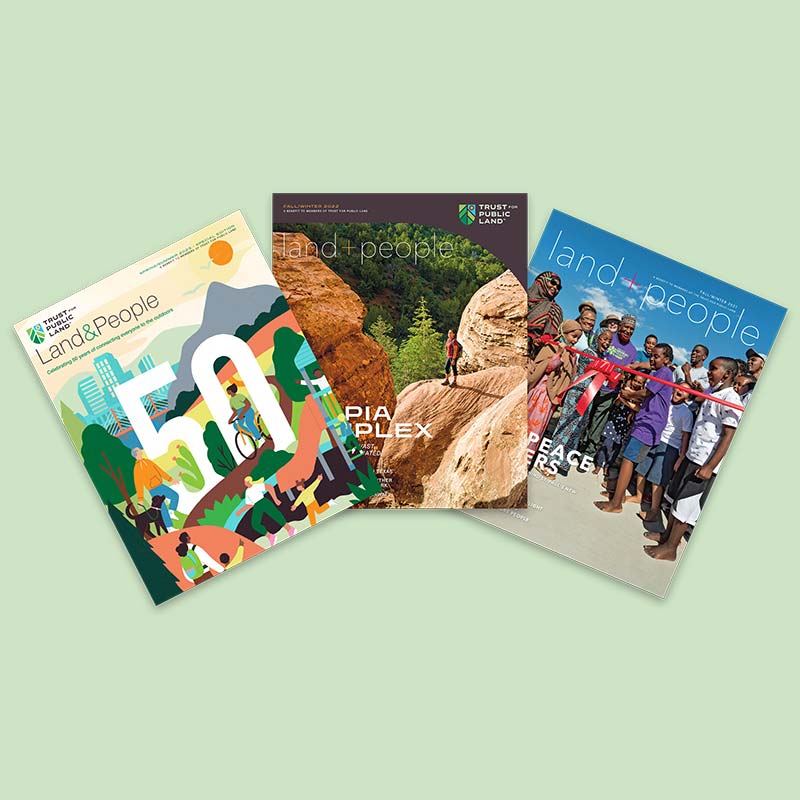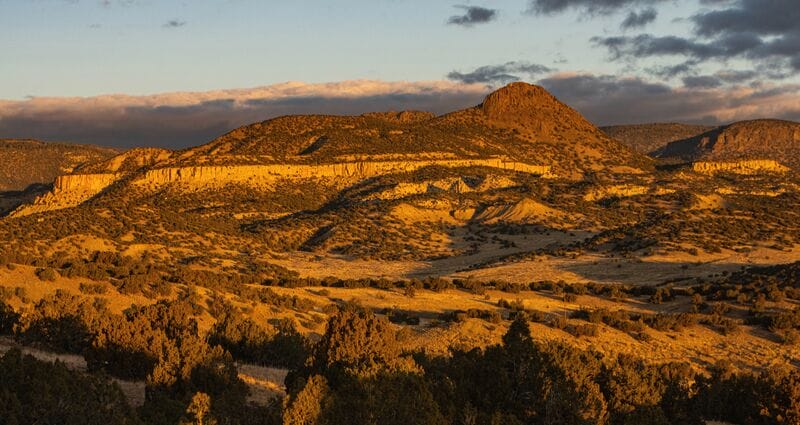Few places in what is today called the United States evoke as deep a sense of land and human antiquity as does New Mexico. Anyone who’s been there understands why it earned the nickname the Land of Enchantment. The way light illuminates the brilliant hues of the high desert mountains sings of the spirits of earth and sky. The centuries-old adobe buildings and aroma of roasting green chiles wafting through towns large and small in late summer bespeak ancient human relationships to the land, unveiling the sublime magic that defines this landscape.
And no communities in America are more ancient than the villages of the area’s Pueblo peoples. Some, like Taos and Acoma, at least a thousand years old, are among the oldest continuously inhabited places in the U.S. The people of the Pueblos have managed to maintain much of their ancient cultures in the face of relentless modernity, and it is the wisdom, knowledge, and experience inherent to these cultures that Dr. Ken Lucero brings to his role as director of Trust for Public Land’s Tribal and Indigenous Lands program.
Learn more about TPL’s Tribal and Indigenous Lands work.
Ken’s roots are in Zia Pueblo with relations at Cochiti, two of 19 permanent villages that Pueblo peoples established in northern New Mexico, clustered near Albuquerque and Santa Fe. Like his ancestors, he has been there his entire life. “I am fortunate for my Pueblo to be in the place our forefathers settled—where we are meant to be,” he says. “I want the same for other tribes and their people.” Ken earned a doctorate in social justice from Arizona State University and a bachelor’s degree in Native American studies at the University of New Mexico.
As Ken and I spoke, we were sure we’d met before but couldn’t quite figure out where or when. I graduated from the same program just a couple of years before him, and most of my classmates were Pueblo and Navajo. But Ken is the type of person who feels instantly familiar even if you don’t know him. Like many of my Native classmates at UNM, he follows a path he was almost destined for since childhood, the path of leadership and responsibility—but took a circuitous route to get there.

Dr. Ken Lucero, director of TPL’s Tribal and Indigenous Lands program. Photo: Trust for Public Land
Prior to UNM, Ken attended Central New Mexico Community College, where he completed an accounting degree. Working for some years in the banking industry, by 1998 he’d reached a turning point, setting his sights on tribal government: “Our leadership is selected by our religious leaders, and I was appointed as a governor’s assistant [at Zia Pueblo]. It was my first real opportunity to see what the governor and tribal office does. It got me interested in everything tribal and governance,” he remembers.
Common to young men in Pueblo cultures whose political leaders are all male, Ken grew up with the message that when he became of age (18), he would be eligible for appointment to tribal political positions. When his governor’s assistantship ended, he took a position as a tribal administrator, where his banking background was useful because of the constant managing of contracts, budgets, and financial reports. In that role, Ken became intimately familiar with tribal operations. He’s since served as both a field representative for U.S. Senator Martin Heinrich and as director for RWJF Center for Native American Health Policy at UNM.
Our conversation turns to his role at TPL. Chuck Sams, his predecessor and enrolled member of the Confederated Tribes of the Umatilla Indian Reservation, is now head of the National Park Service. And Laguna Pueblo tribal member Deb Haaland is secretary of the interior—and a TPL collaborator, particularly on the Tribal Community Schoolyards Pilot Program, developed in partnership with the Bureau of Indian Education—representing unprecedented Native American influence at the highest levels of the government, especially around land issues.
“This is definitely a unique moment when Native people are in positions they should have been in a long time ago,” Ken reflects. “But we need to have Native people continue to step up and help elevate them because it’s going to take more than Deb Haaland, Chuck Sams, and Ken Lucero to maintain this momentum. It’s been hundreds of years that tribes have been under the thumb of federal or Spanish or Mexican rule and thought of as less than. I see that as part of my role and responsibility, to educate people.”
Trust for Public Land is now, of course, his platform to do that. That can mean difficult, unsettling conversations about what land return means to both tribes and to nontribal users. “It must include returning land to Indian people without guarantees of public access and conservation easements,” says Ken.
Such negotiations present questions about how and when to withdraw public access to certain lands—especially those relevant as sacred sites, such as the Valles Caldera, which is spiritually significant to all the tribes in northern New Mexico, Ken points out.
“It’s been hundreds of years that tribes have been under the thumb of federal or Spanish or Mexican rule and thought of as less than. I see that as part of my role and responsibility, to educate people.”
– TPL Tribal and Indigenous Lands Director Dr. Ken Lucero
He goes on to explain that there are inadequate legal mechanisms to protect environmental integrity or Native Americans’ ability to conduct ceremonies privately on sacred sites located within public lands. TPL intends to address that. There are several different ways that this can be accomplished. The main intention is that decisions around access should be determined by or in collaboration with tribes and Indigenous groups. Native peoples will manage their lands in a way that balances the needs of their people, the area’s natural resources, and the local community. Meaningful land back efforts for tribes, in other words, must be land returned on their terms, with “trust that they will do the right thing,” says Ken.
Conversations about returning land to tribes is a source of anxiety for many Americans, but it is made more palatable by the climate crisis. Ken gets straight to the point: “Non-Indians are now worried that we need to do something to save the earth, and that leads to saying, ‘Well, then we need to stop oil and gas development, which always happens on or near Indian lands.’
“This means buying up private land for conservation. They know that Native people tend to be on the side of protecting the earth, resources, and sacred sites. So this gives us an opportunity to make this trend [land return] last. Because I don’t think non-Indians are going to give up on conservation and trying to save the planet. No matter what color, race, religion, we all have to be concerned about that.”
Dina Gilio-Whitaker, Colville Confederated Tribes descendant, is a renowned scholar and author in American Indian studies. Her most recent book is As Long as Grass Grows: The Indigenous Fight for Environmental Justice, from Colonization to Standing Rock.
This raw, beautiful landscape in Southern California is home to Indigenous heritage sites, and it provides critical habitat for threatened and endangered species. Urge the administration to safeguard this extraordinary landscape today!

Donate to become a member, and you’ll receive a subscription to Land&People magazine, our biannual publication featuring exclusive, inspiring stories about our work connecting everyone to the outdoors.

